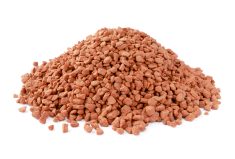“Fifteen years ago people didn’t think Greenpeace was a significant player in policy development – they are, they clearly are.”
– Randy Giroux
Genetically modified (GM) wheat hasn’t been commercialized but wheat contaminated by other GM crops is out there if someone looks hard enough for it, says Ian White, president and CEO of the Canadian Wheat Board (CWB).
“I think it is inevitable that (it will be found),” White told the Canada Grains Council’s 41st annual meeting in Winnipeg April 19.
Read Also

University of Manitoba honours three agriculture alumni
Cathey Day, Fred Greig and Kim McConnell were chosen for the University of Manitoba’s 2025 certificates of merit from the agricultural and food sciences faculty.
“We might not see GM wheat introduced for a long period of time – may be the next 10 years in Canada – but we will certainly see GM material through the handling system and with the admixture and tolerances for wheat for instance it will be inevitable if testing is done to the levels that we now (see).”
That’s why it’s critical countries establish a low level of presence (LLP) policy so wheat trading isn’t disrupted by GM traits accidentally showing up in wheat dockage or even in dust, he said.
“When you look at the (CDC Triffid) flax issue where you didn’t think there was a problem you realize there’s a risk,” White said.
A similar problem arose when the European Union found traces of unapproved GM events on imported American soybeans traced to dust off of GM corn.
In the absence of an LLP policy most countries have zero tolerance for the presence of GM traits not approved domestically.
Those who wish agricultural biotechnology would just disappear are going to be disappointed, said Randy Giroux, Cargill’s scientific lead for corporate agricultural biotechnology.
“It’s not going to go away,” he said. “Biotech is here, producers love it and it serves a lot of our needs in agriculture.”
There are around 30 commercialized GM crop traits now and 120 are expected by 2050, he said.
However, GM crops will continue to be differentiated from non-GM, Giroux added. While treating them differently adds complexity, it also creates opportunities, he said.
Giroux also said the GM industry needs to talk to groups that have concerns about GM technology.
“Fifteen years ago people didn’t think Greenpeace was a significant player in policy development – they are, they clearly are.” [email protected]



















